In order for the designer to not interfere with the implementation of his creative ideas, he has in his arsenal many fabrics of different colors, textures, and each material has its own structural features, advantages and disadvantages.
Nobody bothers you and take advantage of such a variety of fabrics on your own to create your own unique image. And if you have not previously encountered such a task as choosing fabric for an evening dress, then check out the tips from the personal experience of the best tailors and designers.
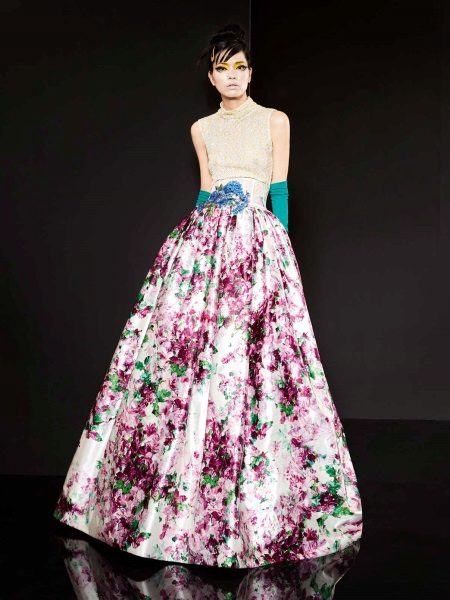
Basic rules
- Each style and style of an evening dress corresponds to certain types of fabrics. If you need a model with a falling skirt, many pleats and tucks or multi-tiered, then give preference to light and soft materials (chiffon, silk, crepe and thin taffeta, soft guipure). Dense fabrics hold their shape well, so they allow you to hide the excess volume. The main methods used are draperies, wide folds, etc. A simple style will look rich if you choose fabric with a bright pattern, an unusual pattern, decorative elements, velvet and brocade, guipure and satin gabardine are also suitable. Organza is suitable for lush outfits on the lining.
- The material is selected taking into account the celebration, season and purpose of the dress, for example a trip to the theater, a date, a party, an official celebration.
- Do not be afraid to combine different types of fabric. Differences in texture and density will create a beautiful original dress. Knowing the properties of fabrics and having a great taste, you can achieve the versatility of the outfit in which you can safely go to work and to a party.
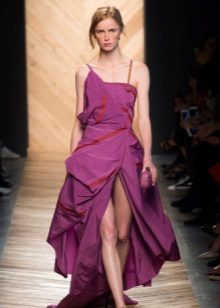

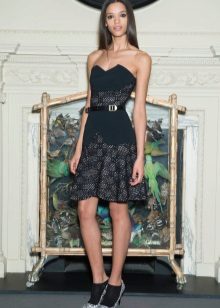
Fabrics for the warm season
In spring and summer, when the earth wakes up and comes to life, I want to get rid of gray and cold days as soon as possible. Then the choice usually falls on flying and delicate, even translucent fabrics with all kinds of prints and glitter.
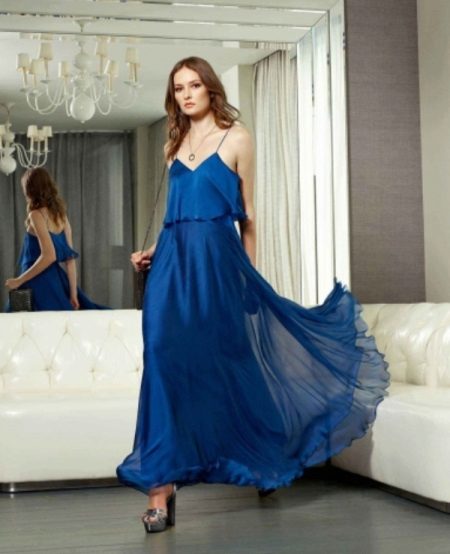
Atlas
The traditional fabric for a festive evening dress is satin. It captivates with a brilliance emanating from almost invisible fibers, which makes it look rich and luxurious.
The atlas is different in density and composition, divided into silk, polyester and acetate.
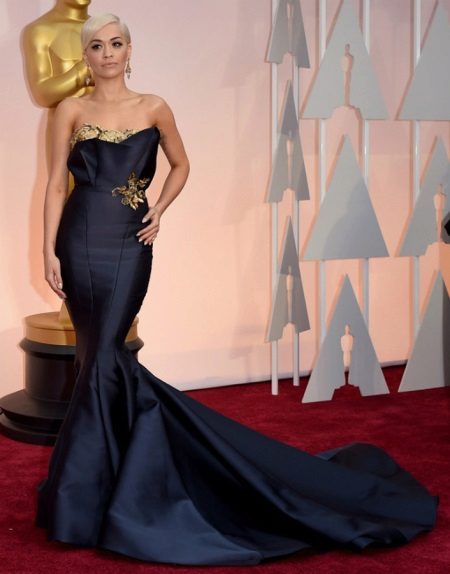
Satin silk is not afraid of experiments and harmoniously looks in a duet with other matte, lace and transparent fabrics. Since the material is quite dense, it is often decorated with pearls, crystals, embroidery and other elements.
There is no style that can not be sewn from this wonderful fabric.
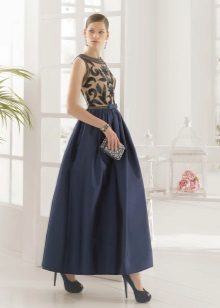

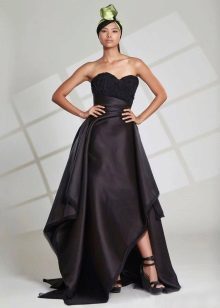
Silk
"Pearl among materials" - that's what silk is called. It is beautiful, soft and plastic, smooth and shiny, durable and hygienic. Dresses are created luxurious, feminine and elegant. Created from natural silk threads, it warms in the cold and cools in the heat.
The only drawback is that it hesitates. But if artificial fibers are added to the material, then silk is not so whimsical. Natural and artificial silk can be distinguished without even touching it. The difference is seen in the overflow of color and brilliance.
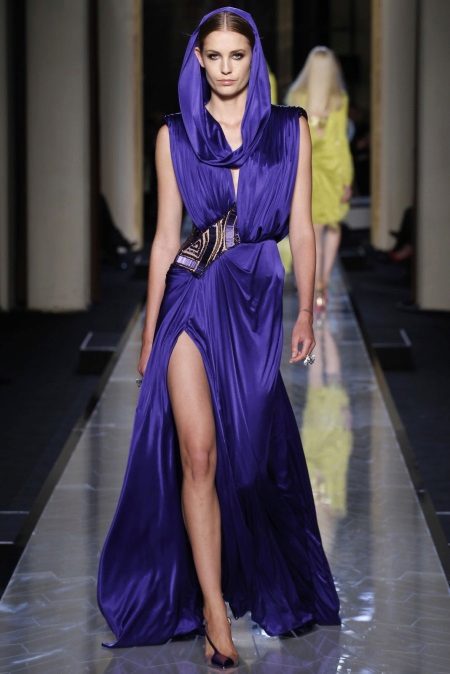
In models with a complex cut, folds and assemblies fit flawlessly and look beautiful. Despite the plasticity of silk, it is difficult to work with. It is not easy for an experienced tailor to properly sew in a collar or sleeves, sew in cuffs or make a buttonhole.
This is explained by the fact that a slippery surface can make it difficult to cut and sew. But simple models without sleeves or with an American armhole can be sewn even with minimal experience.
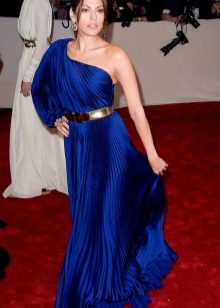
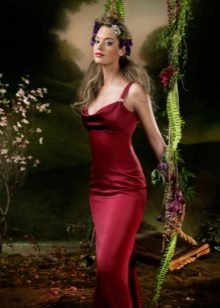
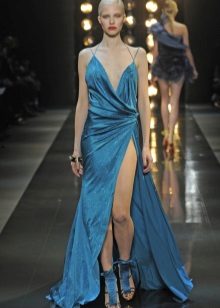
There is a wide range of silk fabrics, such as silk crepe, chiffon, muslin. To stretch add elastane.
Silk dresses with a cut, summer flying a-line, mermaid, straight cut with drapery on the bodice look equally beautiful.
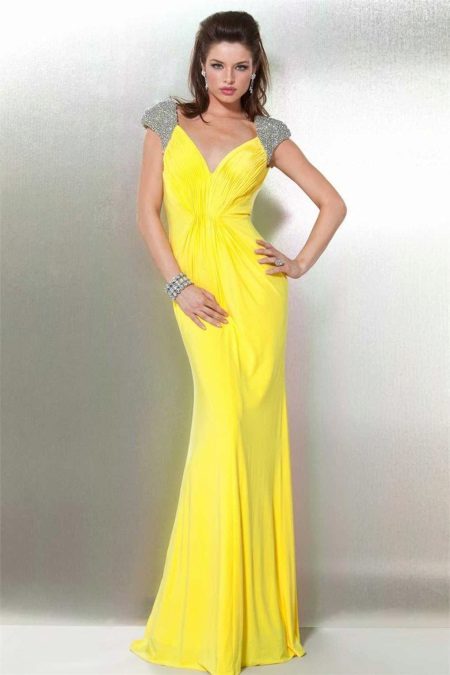
Lace
The favorite in evening dresses for a long time is lace. Complex patterns emphasize the dignity of the figure. The image becomes feminine, romantic.
Guipure, chantilly, Alison, Vologda, tatting, Irish - all kinds can not be counted, but not all the colors and shades. Motives and patterns are so diverse that it is very easy to be unique.
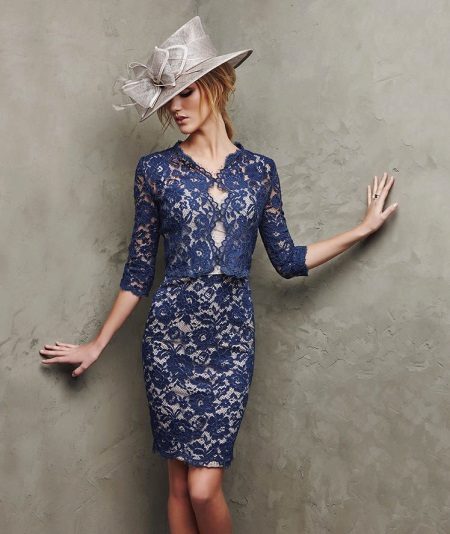
When choosing a lace fabric, consider details such as:
- web width. Usually it is standard;
- the density of the openwork pattern. The fabric is soft and delicate. In this case, it is not recommended to be used in places that are most prone to tearing. There is fabric and dense, it should be borne in mind that it is poorly draped;
- decor (embroidery of the canvas with beads and sequins). In places where the fabric is sewn, it is necessary to remove decorative elements;
- in the places of cuts, some openwork cloth or braid has the property of blooming, so you should purchase a little more.
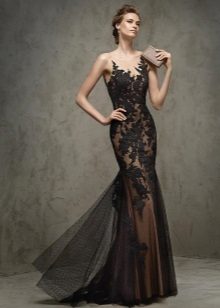

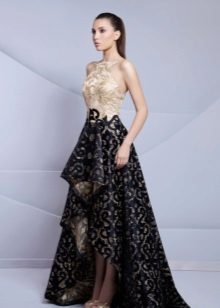
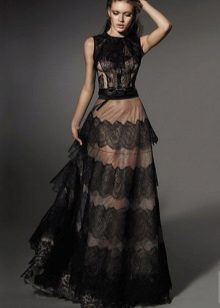
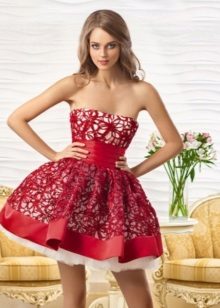
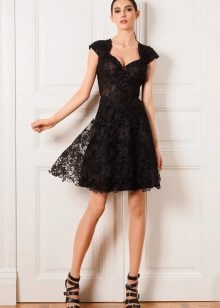
Fabrics for the cold
The division of evening fabrics into cold and warm seasons is of course conditional. Here we are talking about the relevance of the material in a particular season. Satin and silk are quite versatile fabrics and are suitable for winter celebrations, if the lining is made of dense fabrics. At the same time, the brocade and velvet shown below will look rather strange on a girl on a summer evening.
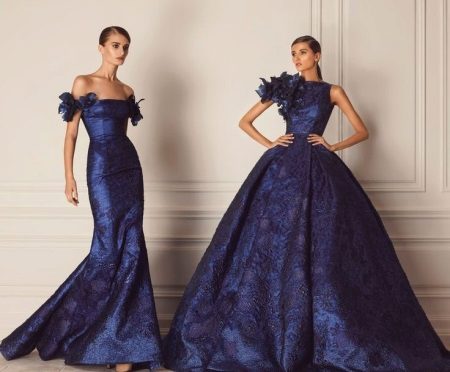
Brocade
Nothing is so good for evenings in the cold, like brocade. It is a rich fabric with a characteristic sheen and usually floral double-sided pattern, which is convenient for combining or finishing details. It is well suited for dresses in oriental style. The only drawback is that it spills heavily.
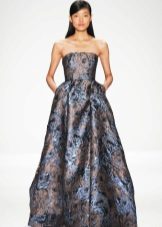
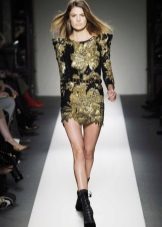
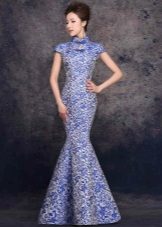
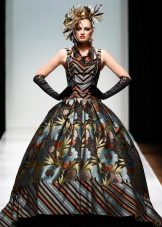
Taffeta
With a glossy overflow, the thin material of taffeta is very strong and dense, plastic. Draped in fairly stiff folds. Sometimes taffeta is thin and dense.Tight keeps its shape and best emphasizes the silhouette.
From taffeta, you can sew a direct evening dress with a peplum, an American armhole or voluminous decor, as well as a puffy dress.
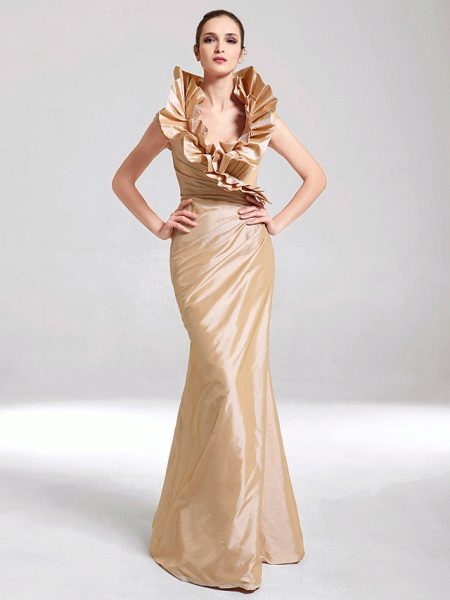
Velvet
For a baroque winter evening dress, velvet will be the perfect fabric. It contains luxury, pomp and grace. Dresses are usually sewn with a simple silhouette on the figure with the least number of seams and tucks. Velvet does not tolerate finishing lines on details.
It happens on the basis of cotton or silk, for elasticity, viscose with elastane is added.
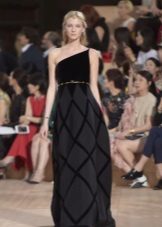
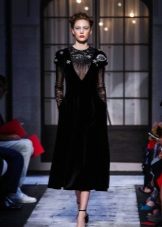
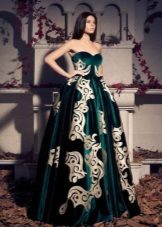
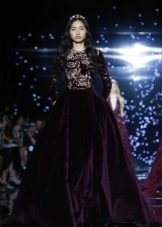
Translucent fabrics
The lightness of the image, some sexuality and mystery provide translucent fabrics. These include organza, varieties of chiffon, georgette and veil. They are draped perfectly, therefore, they are used as a decoration for dresses, and at the same time they create magnificent underskirts from them.
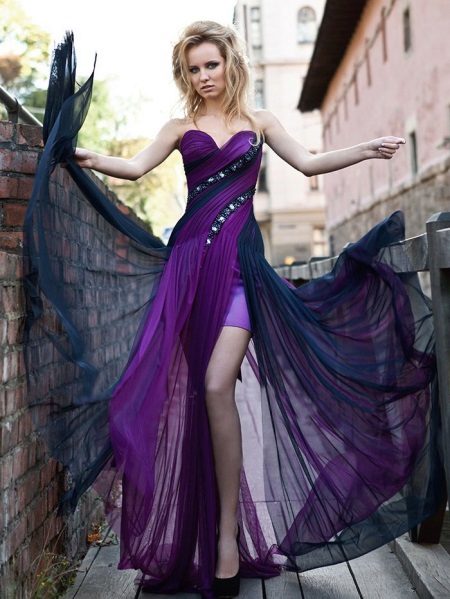
Chiffon
The translucent and light chiffon is somewhat similar to a veil. It belongs to silk fabrics and has many varieties. They are different in the density of the threads and the weaving of the canvas.
Chiffon is used for sewing summer evening dresses, flying and practically not significant. For the most part they are decorated with drapery, which makes it possible to stunningly emphasize the bends of the body and at the same time give the necessary volume in the right places.
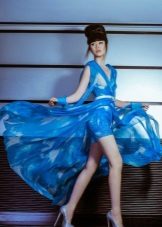
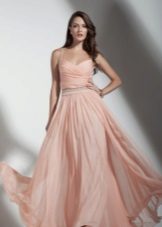
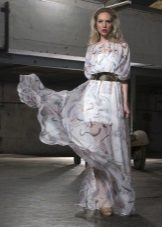
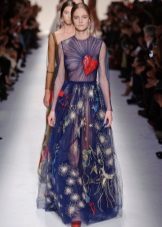
When choosing a fabric, look at its texture. You can choose a matte texture that has a silk sheen and moire pattern.
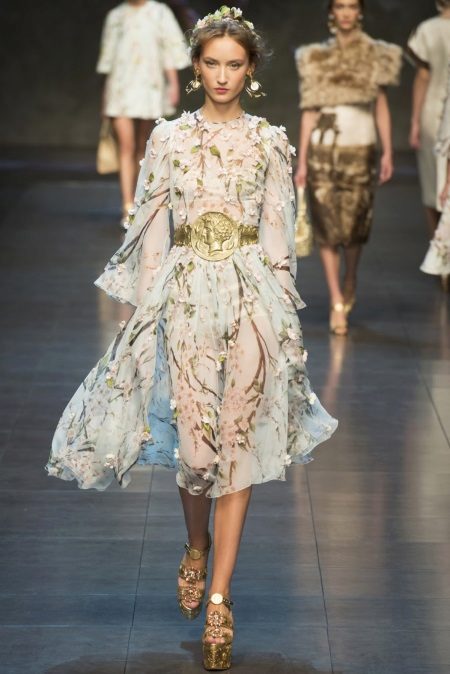
Organza
Among translucent fabrics, very thin gas with a modest sheen and overflow is no less popular for sewing spring-summer outfits. It is made from viscose, silk and polyester. Therefore, organza is characterized by rigidity and preservation of the original form.
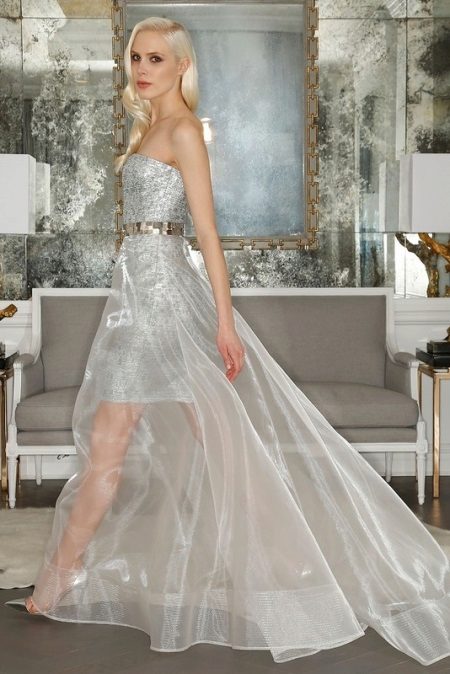
The fabric is well draped. Use it to decorate the top layer of the dress. Air hoses, ruffles and ruffles, flounces and high collars are created from the same organza. She is also surprising in that she creates a picture using print and embroidery.
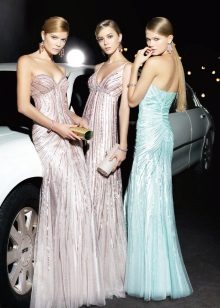
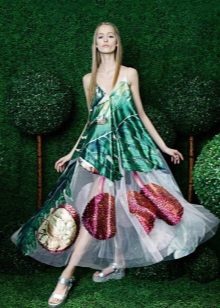
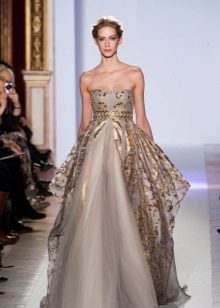
Fatin
Synthetic mesh is mainly used to create petticoats. Sew sleeves from soft mesh and make inserts on the neckline.
Elastic and well-holding shape, it contributes to giving the desired volume. Also, tulle does not wrinkle and does not get dirty. But it is easy to melt and non-hygroscopic, so it is advisable to sew the lamb of their natural fabrics.
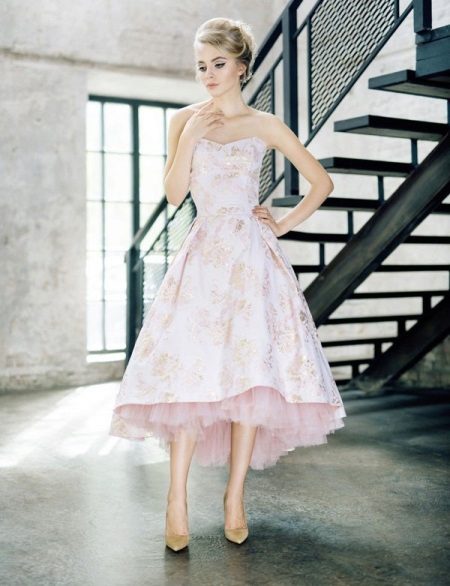
Fatin is interesting in multicolor. In one outfit, you can use an unlimited number of colors. At the same time, the more fabric is used for the skirt, the more interesting it looks.
The mesh lends itself to decoration. They embroider on it, sew lace, spray it, decorate it with rhinestones and sequins. When choosing such a fabric, it should be borne in mind that the cut should be simple, for example, a sheath dress with a slit, and the boat cutout should be decorated with a soft mesh. The image will be elegant and not inferior to models of expensive lace.
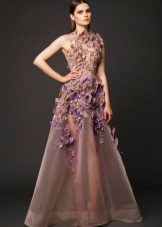
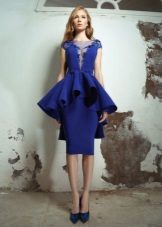
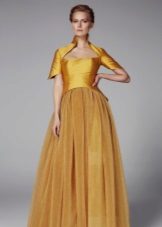
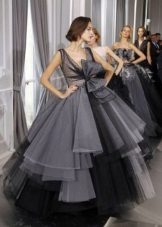
Lining fabrics
To the product had a corporate appearance, use a lining. It is then designed to mask various tucks and seams on the wrong side. And so that the seams are strong and the shape of the dress remains preserved, and the main fabric does not sag under the weight of beads and sequins, they use gaskets.
The choice of material for the pad is the most diverse. In summer, light, soft and well-breathing materials are predominantly chosen. For a transparent evening dress, organza is suitable.
Both the lining and the gasket are cut with a fabric base. And then join together.
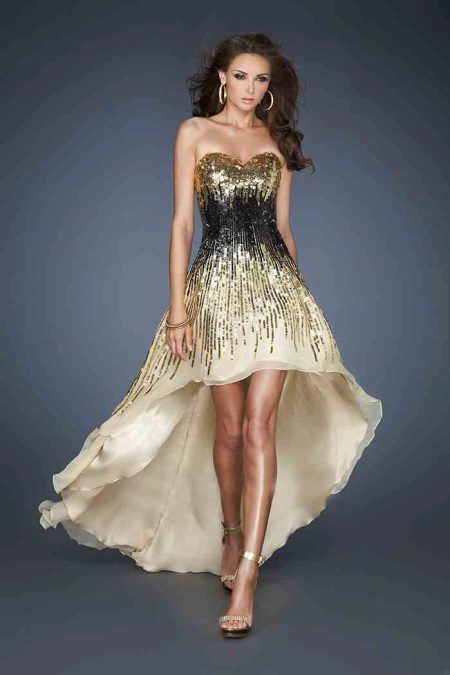
We briefly examined the main fabrics that are popular for sewing evening clothes. Carefully approach the choice of material, do not save on time and cost, and then a perfect evening outfit is provided to you.












For those who do not have the sewing skill, I advise you not to start with thin fabrics. It’s difficult to work with them.